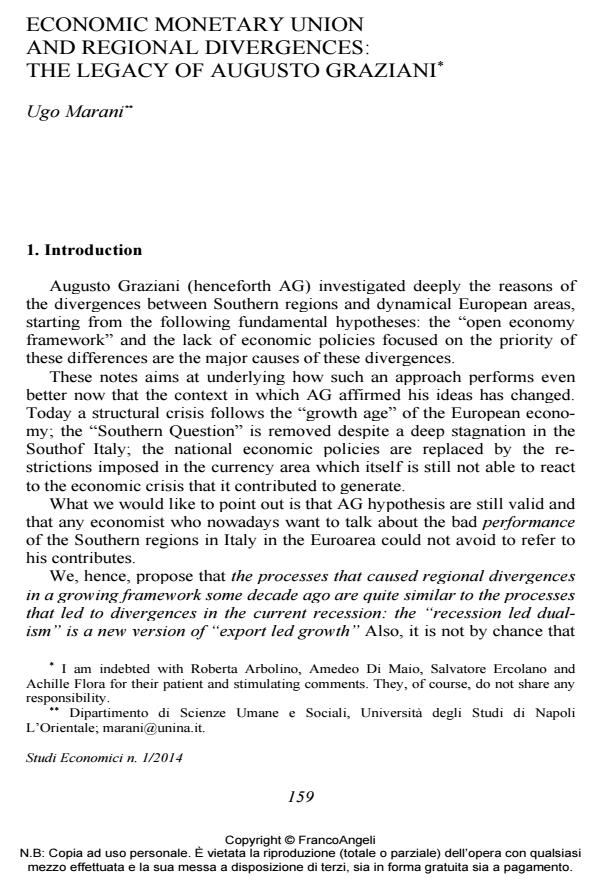Economic monetary union and regional divergences: the legacy of Augusto Graziani
Titolo Rivista STUDI ECONOMICI
Autori/Curatori Ugo Marani
Anno di pubblicazione 2015 Fascicolo 2014/112
Lingua Inglese Numero pagine 13 P. 159-171 Dimensione file 55 KB
DOI 10.3280/STE2014-112012
Il DOI è il codice a barre della proprietà intellettuale: per saperne di più
clicca qui
Qui sotto puoi vedere in anteprima la prima pagina di questo articolo.
Se questo articolo ti interessa, lo puoi acquistare (e scaricare in formato pdf) seguendo le facili indicazioni per acquistare il download credit. Acquista Download Credits per scaricare questo Articolo in formato PDF

FrancoAngeli è membro della Publishers International Linking Association, Inc (PILA)associazione indipendente e non profit per facilitare (attraverso i servizi tecnologici implementati da CrossRef.org) l’accesso degli studiosi ai contenuti digitali nelle pubblicazioni professionali e scientifiche
The paper outlines the relevance of Graziani’s thinking concerning the effects on Italy’s Southern regions of the creation of European Monetary Union. His interpretation displayed, since the Sixties, the difficulties of growth in those areas and their dependence by the "open economy" setting that favoured more dynamical Northern Areas. Moreover the lack of national policies, aimed at removing those disequilibria, deepened the territorial divergences. Such an approach is, in our view, still convincing and reinforces, indeed, its validity even in the presence of a radical change of the context in which those reflections matured. We suggest the mechanisms underlying the "export-led-growth regional dualism" of some decade is quite similar to "crisis led dualism" of today European Monetary Union. It is not by chance, hence, that recent innovative models working on resilience and hysteresis in lagging regions begin to reassess the Graziani’s interpretation.
Parole chiave:Open Economy, European Monetary Union, Regional Distribution of Activities, Regional Divergence.
Jel codes:F15, F43, F45, R12
Ugo Marani, Economic monetary union and regional divergences: the legacy of Augusto Graziani in "STUDI ECONOMICI " 112/2014, pp 159-171, DOI: 10.3280/STE2014-112012